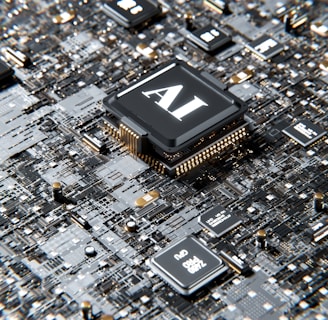Machine Learning and Data Analytics
Manoj Agarwal
12/25/20243 min read


Machine learning and data analytics are two closely related fields that are having a significant impact on various industries and aspects of our lives. Machine learning is a type of artificial intelligence that allows computers to learn and improve from experience, without being explicitly programmed. Data analytics, on the other hand, is the process of examining, cleaning, transforming, and modeling data to extract useful information, insights, and knowledge. Together, these technologies are being used to analyze large and complex data sets, and to make predictions and decisions based on the insights and knowledge gained from the data.
Machine learning algorithms can be grouped into three main categories: supervised learning, unsupervised learning, and reinforcement learning. Supervised learning algorithms are trained on labeled data, which means that the data has been labeled with the correct output. These algorithms are used for tasks such as classification and regression. Unsupervised learning algorithms are trained on unlabeled data, and they are used for tasks such as clustering and dimensionality reduction. Reinforcement learning algorithms are used for tasks such as decision making and control, and they learn by trial and error.
Data analytics is a process that involves several steps, including data collection, data cleaning, data exploration, data visualization, and data modeling. Data collection is the process of gathering data from various sources. Data cleaning is the process of removing or correcting inaccuracies, inconsistencies, and missing data. Data exploration is the process of analyzing the data to understand its characteristics, patterns, and relationships. Data visualization is the process of creating visual representations of the data to make it easier to understand and communicate. Data modeling is the process of building mathematical models to represent the data, and to make predictions and decisions based on the data.
Machine learning and data analytics are being used in a wide range of applications, including healthcare, finance, marketing, and transportation. In healthcare, machine learning and data analytics are being used to develop personalized medicine, to predict patient outcomes, and to improve the efficiency of healthcare systems. In finance, machine learning and data analytics are being used to detect fraudulent transactions, to analyze financial markets, and to make investment decisions. In marketing, machine learning and data analytics are being used to analyze customer data, to predict customer behavior, and to optimize marketing campaigns. In transportation, machine learning and data analytics are being used to optimize logistics, to improve traffic flow, and to develop autonomous vehicles.
The future of machine learning and data analytics is expected to be marked by the development of new technologies that will push the boundaries of what these technologies can do. One of the most significant areas of innovation is the development of deep learning, which is a type of machine learning that is based on artificial neural networks. Deep learning algorithms have been used to achieve breakthroughs in areas such as computer vision, natural language processing, and speech recognition.
Another area of innovation is the development of explainable AI, which is a type of machine learning that can provide transparent and interpretable explanations of its decisions and predictions. Explainable AI is important in areas such as healthcare, finance, and transportation, where the decision-making process must be transparent and auditable.
Another important area of innovation is the development of real-time analytics, which is the ability to analyze data in real-time and make decisions and predictions based on the data. Real-time analytics is important in areas such as finance, transportation, and manufacturing, where decisions must be made quickly and accurately.
Big Data is another important area of innovation in machine learning and data analytics. Big Data refers to the large and complex data sets that are generated by various sources such as social media, IoT devices, and sensor networks.
Another important area of innovation in machine learning and data analytics is the development of edge computing. Edge computing is a type of computing that is performed on devices such as smartphones, tablets, and IoT devices, rather than on cloud servers. This allows for faster processing of data and decision making, as well as reducing the amount of data that needs to be sent to the cloud. Edge computing is important in areas such as transportation, healthcare, and manufacturing, where devices must be able to make decisions and predictions in real-time, even when disconnected from the internet.
There are also challenges that need to be addressed in the future of machine learning and data analytics. One of the biggest challenges is the need for more high-quality data. While there is a growing amount of data available, much of it is of low quality, and may not provide the insights and knowledge needed for accurate predictions and decisions. Additionally, there is also a need for more research and development to improve the quality and capabilities of machine learning and data analytics technologies, as well as to better understand the impact of these technologies on society.
Another challenge is the need for more skilled professionals in the field of machine learning and data analytics. As these technologies become more widely adopted, there is a growing demand for professionals who are trained in machine learning, data analytics, and data science. This includes data engineers, data scientists, and machine learning engineers, who are responsible for designing, implementing, and maintaining machine learning and data analytics systems.
